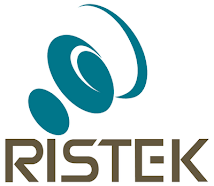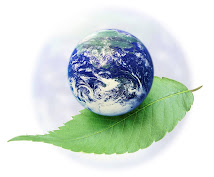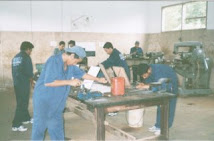Nanoteknologi Hijau
Green nanotechnology refers to the use of nanotechnology to enhance the environmental-sustainability of processes currently producing negative externalities. It also refers to the use of the products of nanotechnology to enhance sustainability. It is about doing things right in the first place—about making green nano-products and using nano-products in support of sustainability.
Contents
Green Nanotechnology
Environmental degradation is a serious problem with many sources and causes. One of the biggest causes is farming. Greenhouses can greatly reduce water use, land use, runoff, and topsoil loss. Mining is another serious problem. When most structure and function can be built out of carbon and hydrogen by molecular manufacturing, there will be far less use for minerals, and mining operations mostly can be shut down. Manufacturing technologies that pollute can also be scaled back.
In general, improved technology allows operations that pollute to be more compact and contained, and cheap manufacturing allows improvements to be deployed rapidly at low cost. Storable solar energy will reduce ash, soot, hydrocarbon, NOx, and CO2 emissions, as well as oil spills. In most cases, there will be strong economic incentives to adopt newer, more efficient technologies as rapidly as possible. Even in areas that currently do not have a technological infrastructure, self-contained molecular manufacturing will allow the rapid deployment of environment-friendly technology.
GREENHOUSES - Moving agriculture into greenhouses can recover most of the water used, by dehumidifying the exhaust air and treating and re-using runoff. Additionally, greenhouse agriculture requires less labor and far less land area than open-field agriculture, and provides greater independence from weather conditions including seasonal variations and droughts. Greenhouses, with or without thermal insulation, would be extremely cheap to build with nanotechnology. A large-scale move to greenhouse agriculture would reduce water use, land use, and weather-related food shortages.
WATER - A few basic problems create vast amounts of suffering and tragedy. According to this World Bank document, water is a major concern of the U.N. Almost half the world's population lacks access to basic sanitation, and almost 1.5 billion have no access to clean water. Of the water used in the world, 67% is used for agriculture, and another 19% for industry. Residential use accounts for less than 9%. Much industry can be directly replaced by molecular manufacturing. Agriculture can be moved into greenhouses. Residential water can be treated and recycled. Adoption of these steps could reduce water consumption by at least 50%, and probably 90%. Water-related diseases kill thousands, perhaps tens of thousands, of children each day. This is entirely preventable with basic technology, cheap to manufacture—if the factories are cheap and portable.
PURIFICATION - Much water today is wasted because it is almost but not entirely pure. Simple, reliable mechanical and electrical treatment technologies can recover brackish or tainted water for agricultural or even domestic use. These technologies require only initial manufacturing and a modest power supply. Physical filters with nanometer-scale pores can remove 100% of bacteria, viruses, and even prions. An electrical separation technology that attracts ions to supercapacitor plates can remove salts and heavy metals.
The ability to recycle water from any source for any use can save huge amounts of water, and allow the use of presently unusable water resources. It can also eliminate downstream pollution; a completely effective water filter also permits the generation of quite "dirty" waste streams from agricultural and industrial operations. As long as the waste is contained, it can be filtered, concentrated, and perhaps even purified and used profitably. As with anything built by nanotechnology, initial manufacturing costs for a water treatment system would be extremely low. Power will be cheap (see below). Well-structured filter materials and smaller actuators will allow even the smallest filter elements to be self-monitoring and self-cleaning. Self-contained, small, completely automated filter units can be integrated in systems scalable over a wide range.
SOLAR POWER - The main source of power today is the burning of carbon-containing fuels. This is generally inefficient, frequently non-renewable, and dumps carbon dioxide and other waste products (including radioactive substances from coal) into the atmosphere. Solar energy would be feasible in most areas of the globe if manufacturing and land were sufficiently cheap and energy storage were sufficiently effective. Solar electricity generation depends on either photovoltaic conversion, or concentrating direct sunlight. The former works, although with reduced efficiency, on cloudy days; the latter can be accomplished without semiconductors. In either case, not much material is required, and mechanical designs can be made simple and fairly easy to maintain.
With molecular manufacturing, sun-tracking designs can benefit from cheap computers and compact actuators. Energy can be stored efficiently for several days in relatively large flywheels built of thin diamond and weighted with water. Smaller energy storage systems can be built with diamond springs, providing a power density similar to chemical fuel storage and much higher than today's batteries. Water electrolysis and recombination provide scalable, storable, transportable energy. However, there is some cost in efficiency and in complexity of technology to deal safely with large-scale hydrogen storage or transportation.
Solar solutions can be implemented on an individual, village, or national scale. The energy of direct sunlight is approximately 1 kW per square meter. Dividing that by 10 to account for nighttime, cloudy days, and system inefficiencies, present-day American power demands (about 10 kW per person) would require about 100 square meters of collector surface per person. Multiplying this figure by a population of 325 million (estimated by the US Census Bureau for 2020) yields a requirement for approximately 12,500 square miles of area to be covered with solar collectors. This represents 0.35% of total US land surface area. Much of this could be implemented on rooftops, and conceivably even on road surfaces.











